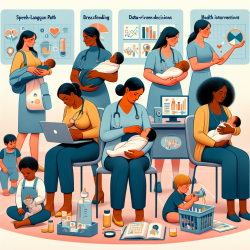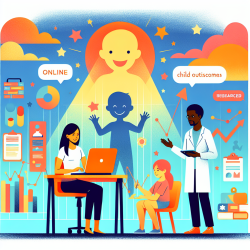At TinyEYE, we understand the importance of accurate assessment and diagnosis of language disorders in young children. The transition from preschool to kindergarten is a critical period for children with developmental language disorders (DLD). However, this period also presents challenges for speech-language pathologists (S-LPs) in making diagnostic decisions and predicting future language and literacy needs. In this blog, we explore the findings from a survey of clinicians in Alberta, Canada, regarding their practices and perspectives on assessing, diagnosing, and predicting outcomes for children with DLD around kindergarten age.
Several decades ago, Scarborough and Dobrich (1990) introduced the concept of "illusory recovery" to explain why some children with early-identified language disorders seem to recover around kindergarten age, only to experience renewed challenges later. This phenomenon raises important questions for clinicians: How confident can we be in assessment tools to accurately diagnose language disorders and predict future needs? Are children truly recovering, or are their improvements temporary?
To gain insights into these questions, we conducted a survey of S-LPs in Alberta, asking about their assessment practices, diagnostic criteria, and experiences with re-referrals of school-age children who had previously been discharged from services. Here are some key findings from the survey:
- Most clinicians rely heavily on clinical observations, standardized tests, and parent concerns when making diagnostic decisions.
- The majority use a cutoff of the 16th percentile or one standard deviation below the mean for diagnosing language disorders.
- Commonly used assessment tools include the Clinical Evaluation of Language Fundamentals (CELF), Preschool Language Scale (PLS), and Test of Narrative Language (TNL).
- Clinicians expressed high confidence in their ability to diagnose language disorders but less confidence in predicting future communication difficulties.
- Many clinicians report sometimes or often receiving re-referrals for school-age children who had previously been discharged from services, with literacy concerns being a prominent reason for re-referral.
These findings highlight the complexities and challenges faced by clinicians in assessing and diagnosing language disorders in young children. The reliance on both formal and informal assessment methods reflects the need for a comprehensive approach to understanding each child's unique communication abilities and challenges. Additionally, the concerns about re-referrals and the potential for illusory recovery underscore the importance of ongoing monitoring and support for children with a history of language disorders.
At TinyEYE, we are committed to supporting S-LPs in their efforts to provide accurate assessments and effective interventions for children with DLD. We believe that continued research and collaboration between clinicians and researchers are essential for improving diagnostic practices and ensuring positive long-term outcomes for children with language disorders.
To read the original research paper, please follow this link: Canadian Journal of Speech-Language Pathology and Audiology.










